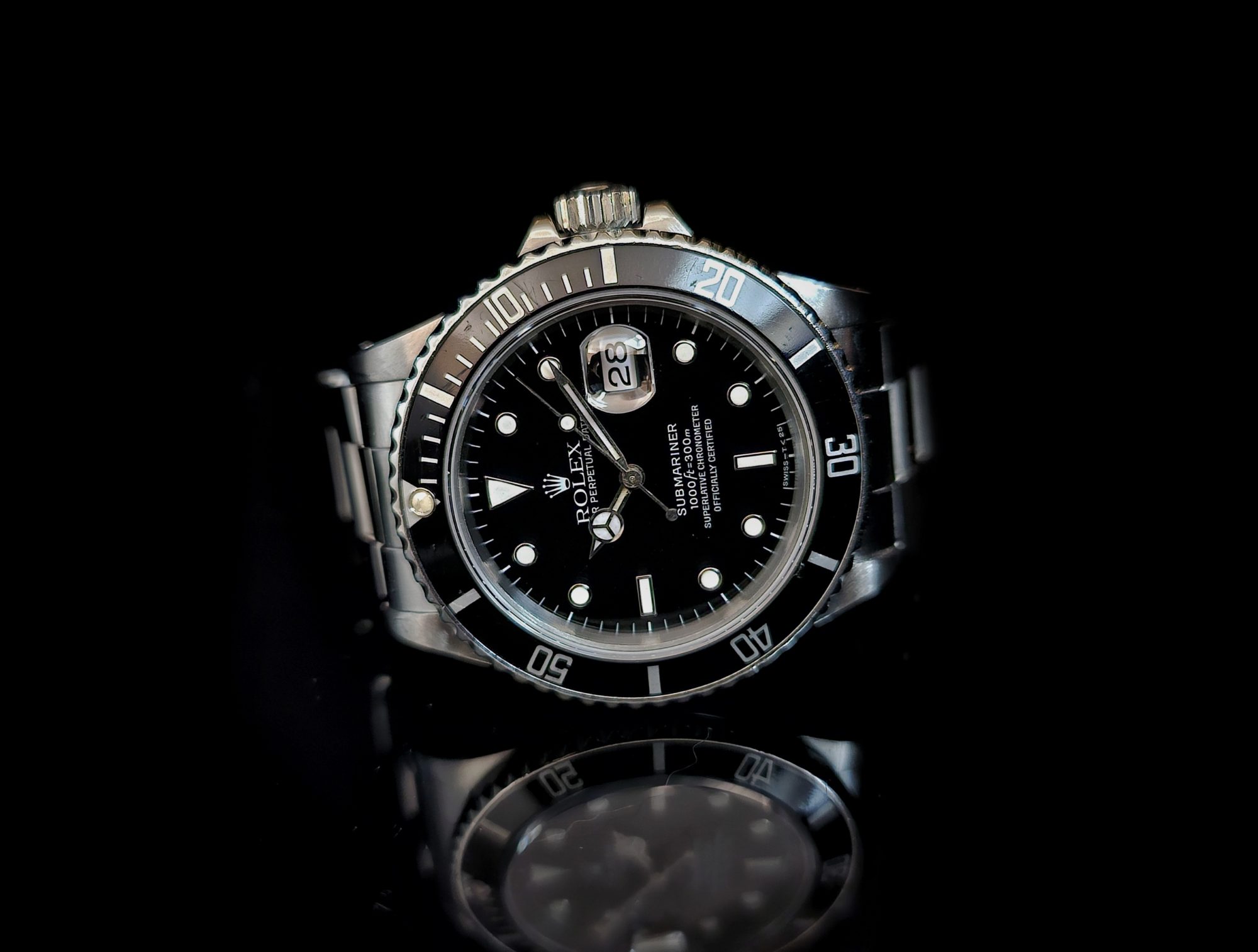Rolex Submariner 16800 vs. 168000: What’s the Difference?
At first glance, the Rolex Submariner references 16800 and 168000 appear to be twins. Their reference numbers are nearly identical, and on the wrist, they’re often indistinguishable to anyone but a seasoned collector. But beneath the surface, Rolex made a quiet but meaningful change—one that would set the course for its modern manufacturing standards. These two models reflect a moment of transition, not just in styling, but in material and philosophy.
Here’s how they differ, and why it matters.
Rolex Submariner ref. 16800 (1979-1988)

Image Source: Bob's Watches
Released in 1979, the Submariner 16800 replaced the outgoing 1680 and brought several important upgrades. It introduced a sapphire crystal for the first time in the Sub line, increased the water resistance from 200 meters to 300 meters, and featured the new Caliber 3035 movement—a higher-frequency automatic with a quickset date function.
Early 16800 dials were matte black with painted tritium markers, giving them a flat, tool-like aesthetic. Over time, the lume on many examples aged into creamy yellow tones. Toward the end of its production run, Rolex shifted to glossy black dials with applied white gold surrounds, a design still seen on modern Submariners. That transition—from matte to gloss, from painted to applied—makes the 16800 a collector favorite. It captures both sides of the Submariner’s evolution in a single reference.
Rolex Submariner ref. 168000 (1988-1989)

Image Source: Le Specialiste Vintage
The ref. 168000, often called the “Triple Zero,” was introduced around 1988 and only produced for about nine months. At a glance, it looks identical to the late 16800: same Caliber 3035, same glossy dial, same case design and bezel. But the key difference lies in the steel.
The 168000 was the first Submariner to be made from 904L stainless steel rather than 316L. While most watch brands still used 316L at the time, Rolex opted for 904L due to its increased resistance to corrosion—especially important for saltwater exposure—and its ability to take a higher polish. Rolex would eventually adopt 904L across its entire lineup, marketing it as “Oystersteel.” The 168000 was the first real-world test of that transition.
Because the model was never heavily promoted and had such a short production window, it remains one of the least common Sub references. But its role in Rolex’s move toward modern metallurgy gives it lasting significance.
Final Thoughts

Curved End Rubber Strap for Rolex Submariner Deployant
Both the 16800 and 168000 represent pivotal chapters in the Submariner story. The 16800 introduced a new crystal, a new movement, and dial changes that bridged the vintage and modern eras. The 168000 quietly laid the groundwork for Rolex’s future, adopting the steel that now defines its reputation for durability and finish quality.
If you own either of these references—or are considering one—Everest’s curved-end rubber or leather straps offer a thoughtful upgrade. They’re custom-fit to the Submariner case, available in both tang buckle and deployant styles, and built to match the comfort and integrity these watches were made for.









Leave a comment